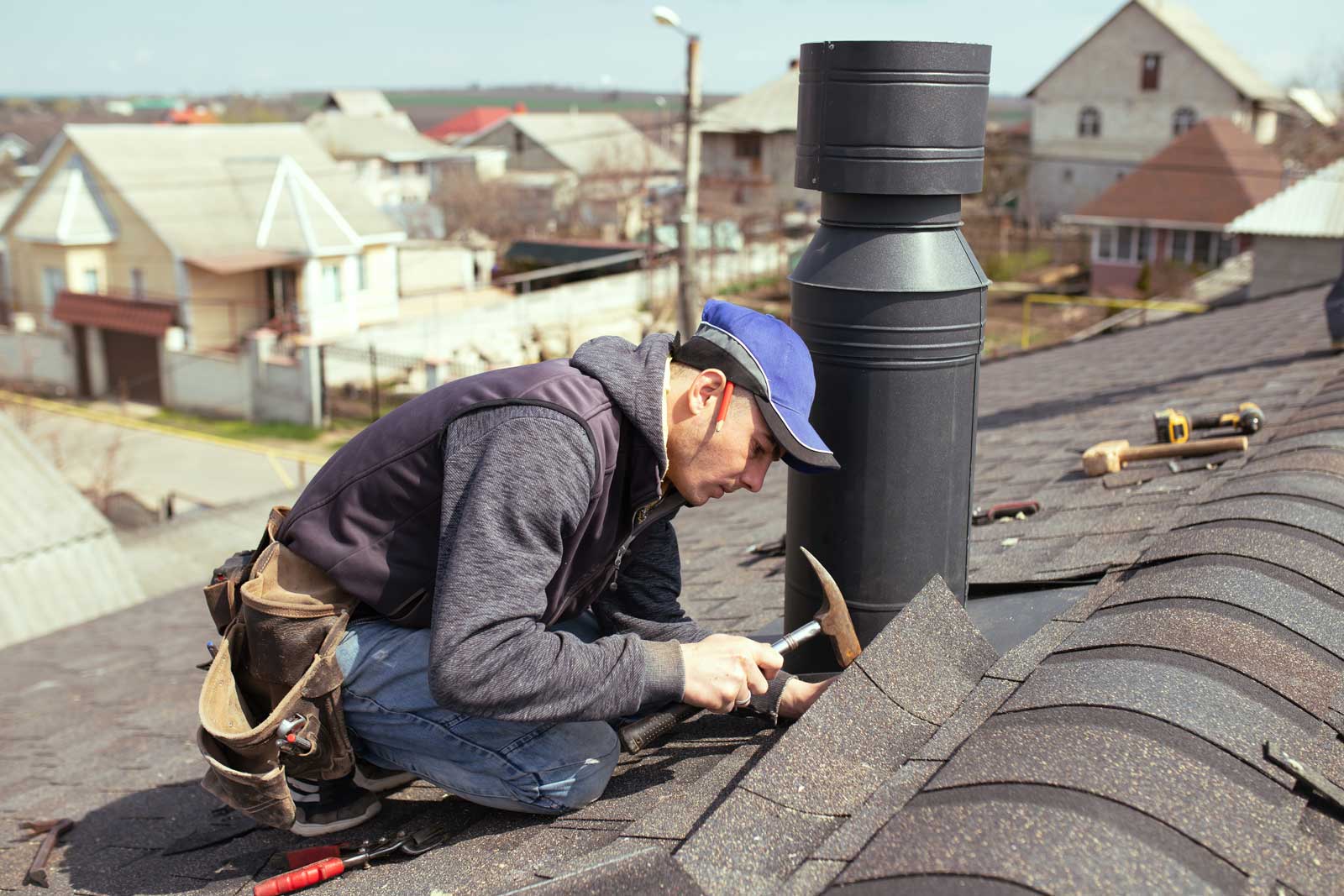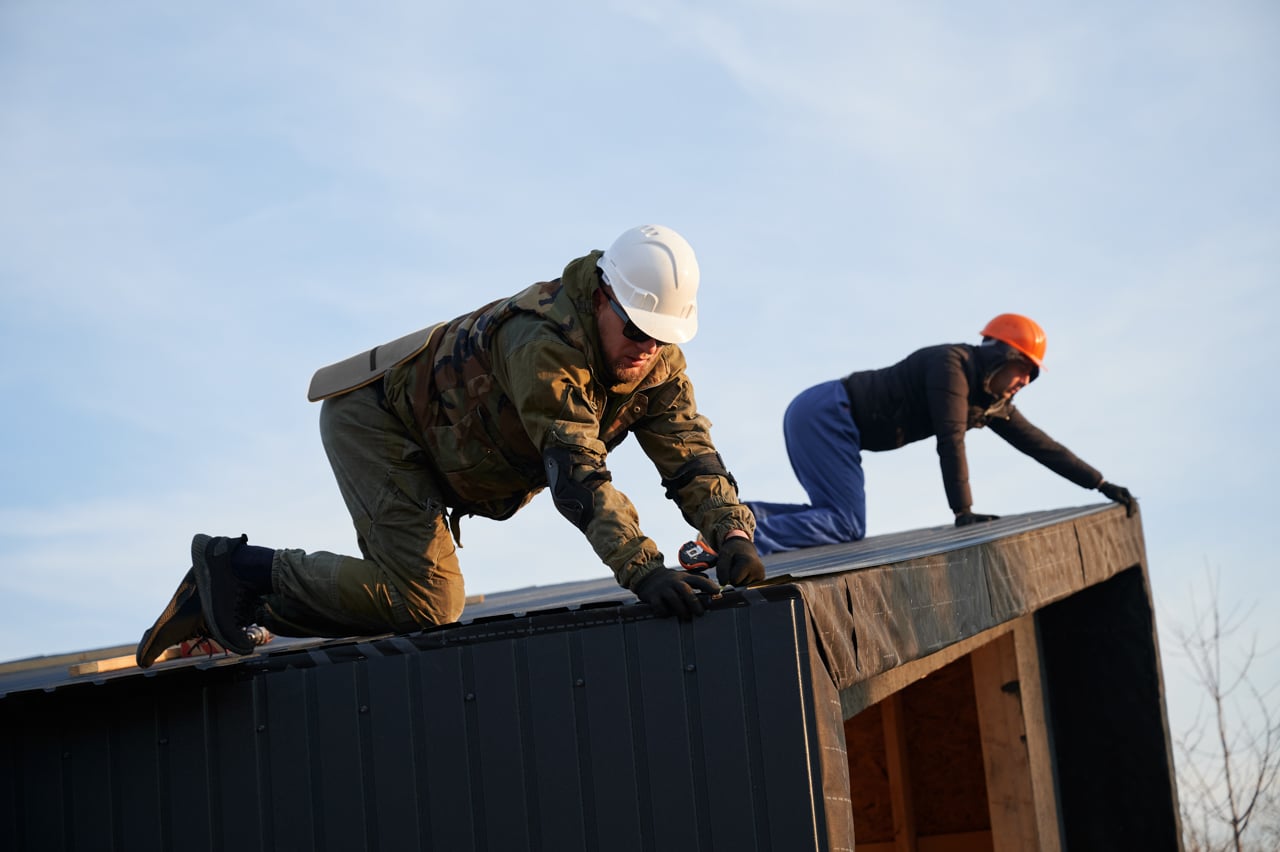13 Dec 2023
Restoring a Flat Roof: The Expert Guide
A flat roof is a popular choice for commercial and residential buildings. However, it requires regular maintenance due to its design and material composition.

A flat roof is a popular choice for commercial and residential buildings. However, it requires regular maintenance due to its design and material composition. Neglecting your flat roof can lead to costly repairs or even replacement. In this post, we will go over the basics of a flat roof, common issues that arise, and how to identify the causes of damage. We will also provide you with step-by-step instructions on how to repair your flat roof to prevent further damage. Lastly, we will emphasise why regular maintenance is crucial to extending the lifespan of your flat roof. Keep reading to learn more about taking care of your flat roof.
Understanding the Basics of a Flat Roof
Flat roofs, commonly used in commercial buildings, have a minimal slope and utilise roofing membranes like EPDM or TPO for waterproofing. Proper insulation and flashing are essential during installation, and regular inspections are vital to spot any damage early on. Ensuring the integrity of a flat roof, whether in a commercial or residential setting, is crucial for long-term structural integrity.
Defining a Flat Roof
A flat roof, with a slight slope of less than 10 degrees, features a horizontal surface and is commonly covered with a roofing membrane like EPDM or PVC. It allows for additional usable space, such as roof gardens or solar panel installations, and can be constructed using various materials like asphalt or rubber roofing, making it a versatile option for commercial roofing.
Common Materials Used in Flat Roofs
EPDM, a type of rubber roofing, is widely chosen for its weather resistance in commercial roofing. PVC roofing membrane stands out for its durability and flexibility, making it a popular choice for flat roofs. TPO, known for its quality and resistance to extreme temperatures, is increasingly used in industry. Gravel and asphalt are also common options for flat roof installation and repair.
Identifying Common Issues with Flat Roofs
Spotting early cracks and leaks on a flat roof is vital to prevent significant problems. Poor installation can result in water damage, mould, and mildew. Harsh weather conditions pose a risk, especially in areas prone to extreme weather. Regular inspections and maintenance are crucial for detecting surface damage. Unaddressed water damage can jeopardise a flat roof’s structural integrity.
Spotting Cracks and Leaks
Spotting small cracks on a flat roof could indicate potential water leaks and damage, requiring professional inspection and repair. Water accumulation in specific areas may signify leaking spots in need of immediate attention. Repairing cracks and leaks often involves the use of specialised materials such as roofing cement to ensure durability and long-term protection. Commercial roofing experts recommend regular inspections to identify and address these issues promptly.
Consequences of Poor Installation
Improper installation of flat roofs can lead to water damage, insulation issues, and mould growth. Inadequate insulation during installation can cause moisture problems. Incorrect flashing may result in water infiltration and damage. The quality of installation significantly affects the roof’s longevity and performance, highlighting the importance of hiring a professional roofing contractor.
Effects of Weathering and Aging on Flat Roofs
Harsh weather conditions expose flat roofs to damage and deterioration. The ageing of materials like EPDM, PVC, or TPO can lead to cracks and seam issues. Flat roofing membranes may need coating or sealant application over time for maintenance. Extreme temperatures cause contraction and expansion, while regular repair and maintenance extend the roof’s lifespan.
Distinguishing Causes of Damage to Flat Roofs
Environmental debris, like tree branches and leaves, can lead to flat roof damage. Foot traffic may cause punctures and membrane issues. Poor drainage can result in water pooling, damaging the roof. UV exposure degrades flat roof materials, especially in sunny climates. Lack of maintenance contributes to problems like water damage, emphasising the importance of regular inspections and upkeep.
Impact of Environmental Debris
Environmental debris, such as branches and leaves, can lead to water ponding on a flat roof surface. Regular removal of debris is crucial to prevent water damage and mould growth. Furthermore, fallen debris can clog roof vents, resulting in moisture issues, and creating conditions for mildew and mould growth. Professional roofers can address these environmental debris issues through regular maintenance.
Role of Foot Traffic in Roof Damage
Excessive foot traffic on a flat roof can harm the roofing membrane, possibly leading to water leaks. To mitigate this, roofers often utilise mesh or fleece protection for flat roofing surfaces exposed to foot traffic. Applying roofing membrane coating with a roller can further strengthen flat roof surfaces against foot traffic damage. Additionally, using caulk and sealant is a common solution for small cracks resulting from foot traffic on a flat roof. Properly designed flat roof access paths can effectively minimise the impact of foot traffic on the roof surface.
Understanding the Risk of Ponding Water
Ponding water poses significant risks to flat roofs, potentially causing damage to the roof membrane, structural deterioration, and increased load, leading to a collapse. Additionally, it attracts mould, mildew, and pests, posing health hazards. Proper drainage is crucial to prevent ponding water and mitigate these risks.
Steps for Locating Roof Damage
Inspecting a flat roof for damage involves checking the surface for signs like cracks, blisters, and seam separations. Additionally, it’s crucial to look for water stains, mould, or mildew as indicators of water damage. Roof vents, flashing, and membrane seams should be closely examined for leaks or damage, while any visible external damage due to extreme weather conditions must not be overlooked. Regular inspections can help identify potential problems early on.
Inspection Techniques for Spotting Damage
When inspecting a flat roof, utilise a flat roof coating roller to check for small cracks and damage. Look for membrane cracks, seam separations, and water stains as signs of damage. Perform a thorough visual inspection focusing on potential leak sources and conduct a moisture inspection to identify areas of water intrusion. Consider involving professional roofers for a comprehensive roof inspection to spot hidden damage.
Checking for Water Stains and Mould
Water stains on the ceiling or walls indicate a leaking area on a flat roof. Mould growth near the roof surface signifies water damage and moisture intrusion. Inspect the roof insulation for signs of moisture to prevent mould and mildew growth. Identify the source of a leak by tracing water stains and address them promptly to prevent further damage to the roof structure.
Tools and Materials Needed for Flat Roof Repairs
Essential tools for flat roof inspections comprise a moisture metre, seam probe, and flat roof primer. Quality roofing materials like cement, sealant, and patches are vital for effective repairs. Fleece, mesh, and caulk are essential for flat roof maintenance. Professional contractors use high-quality roofing membranes, PVC, or EPDM. The right tools, including a roller, vents, and insulation, ensure the best results in commercial roofing.
Essential Tools for Roof Inspection
When inspecting a flat roof, use a moisture metre to gauge moisture levels. A seam probe is vital for identifying small cracks and separations. Prepare the surface with a flat roof primer before repair. Invest in quality equipment including a coating roller, professional membrane, sealant, mesh, and fleece for thorough inspections. These tools are essential for effective roof maintenance and repair.
Choosing the Right Materials for Roof Repairs
When repairing a flat roof, use roofing cement and sealant to address small cracks, leaks, and damage. Quality materials like roof patches, PVC membrane, and EPDM are effective for lasting repairs. Strengthen the existing roof surface by applying proper membrane coating, gravel, and fleece. Choose materials resistant to harsh weather and consider professional advice for optimal results.
Step-by-Step Guide to Repairing a Flat Roof
Start by using roofing cement and a sealant to seal small cracks and holes on the flat roof. Repair damage by applying roof patches, PVC membrane, or EPDM. Before proceeding, conduct a moisture inspection and address any water damage. Ensure proper membrane coating and seek professional guidance for comprehensive repairs, especially for major problems.
Sealing Small Cracks and Holes
To seal small cracks, holes, and seam separations on a flat roof surface, use roofing cement. Applying a quality sealant can prevent water intrusion and further damage, maintaining the roof’s integrity. Promptly addressing these issues is crucial to prevent water damage and leakage. For seamless and effective sealing, consider professional roofers.
Applying Roof Patches
When addressing damage on a flat roof surface, it is essential to use high-quality roof patches, PVC membrane, or EPDM for effective repairs. These patches reinforce weak areas, preventing water damage and leaks. Proper application ensures durability and long-lasting repairs. Seek professional assistance, especially for commercial buildings, to ensure expert application and high-quality repairs. Commercial roofing expertise is crucial for seamless patch application.
Resealing a Roof
Identify and assess the leak source to gauge the damage extent. Clear debris from the affected area. Use a primer for proper sealant adhesion. Apply the sealant as per manufacturer’s guidelines, covering the entire affected section. Allow complete drying before inspecting for further leaks or damage.
Why is Regular Roof Maintenance Crucial?
Regular roof maintenance is crucial for several reasons. It helps prevent costly repairs by addressing small issues before they become bigger problems. Additionally, maintaining your roof can extend its lifespan and enhance its durability. Neglecting regular maintenance can lead to leaks, structural damage, and safety hazards.
Conclusion
Regular maintenance and prompt repairs are essential for the longevity and durability of flat roofs. By understanding the basics of flat roofs, identifying common issues, and distinguishing causes of damage, you can take proactive steps to maintain your roof’s integrity. Locating roof damage through thorough inspections and using the right tools and materials for repairs is crucial for effective restoration. Remember, regular maintenance not only prevents costly repairs but also ensures the safety and protection of your property. By following these simple steps and prioritising regular roof maintenance, you can extend the lifespan of your flat roof and avoid potential problems in the future.



